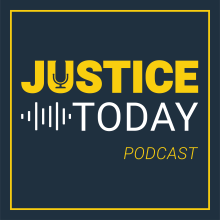Evidence
Frye, Daubert, and PCAST: Countering Admissibility Challenges
Substance Use Initiation Among Justice-Involved Youths: Evidence From the Pathways to Desistance Study
Improving Analysis of "Trace DNA" Evidence
Comparison of Examiner Conclusions with Score-based Likelihood Ratios for Cartridge Case Evidence
The Impact of False or Misleading Forensic Evidence on Wrongful Convictions
Comparison of Examiner Conclusions with Score-based Likelihood Ratios for Cartridge Case Evidence
Just Science Podcast: Just Collecting More Evidence from Cartridge Cases
Statistical Foundations of Score-Based Methods in Forensic Identification of Source Problems”
Time Since Deposition for Touch DNA Evidence
Embodying Evidence to Action: Tracking the Impact of Three Key NIJ Research Investments
De-escalation Training: What Works, Implementation Lessons, and Taking It to Scale; Plenary at the 2023 NIJ Research Conference
Police use of force, while infrequently used, is a tremendous concern to public safety in the United States when officers employ it excessively or inappropriately, causing injury or death and eroding public trust in law enforcement. This plenary from the 2023 NIJ Research Conference describes the Integrating, Communications, Assessment, and Tactics (ICAT) de-escalation training program developed by the Police Executive Research Forum to guide officers in defusing critical incidents.
See the YouTube Terms of Service and Google Privacy Policy
Can Science Enhance Equity? Findings and Implications From a Study To Detect Bruising on Victims with Dark Skin Pigmentation
This plenary panel from the 2023 NIJ Research Conference features fascinating research on a methodology to improve the detection and documentation of bruises on victims of violence who have dark skin pigmentation. This study highlights the intersection between science, justice, and racial equity, featuring practitioner and victims’ advocacy perspectives. The discussion describes the research and its findings and explore strategies to ensure that this particular evidence-based methodology can be widely implemented by nurse practitioners in the field.
Participants:
See the YouTube Terms of Service and Google Privacy Policy
2023 NIJ Research Conference Opening Ceremony
The theme of NIJ’s 2023 Research Conference was “evidence to action,” and our goal was to bring researchers and practitioners together to learn about the latest research evidence and how it can be implemented to promote safety, equity, and justice.
The opening ceremony included remarks from U.S. Attorney General Merrick B. Garland, Assistant Attorney General for the Office of Justice Programs Amy Solomon, and NIJ Director Nancy La Vigne.
See the YouTube Terms of Service and Google Privacy Policy




